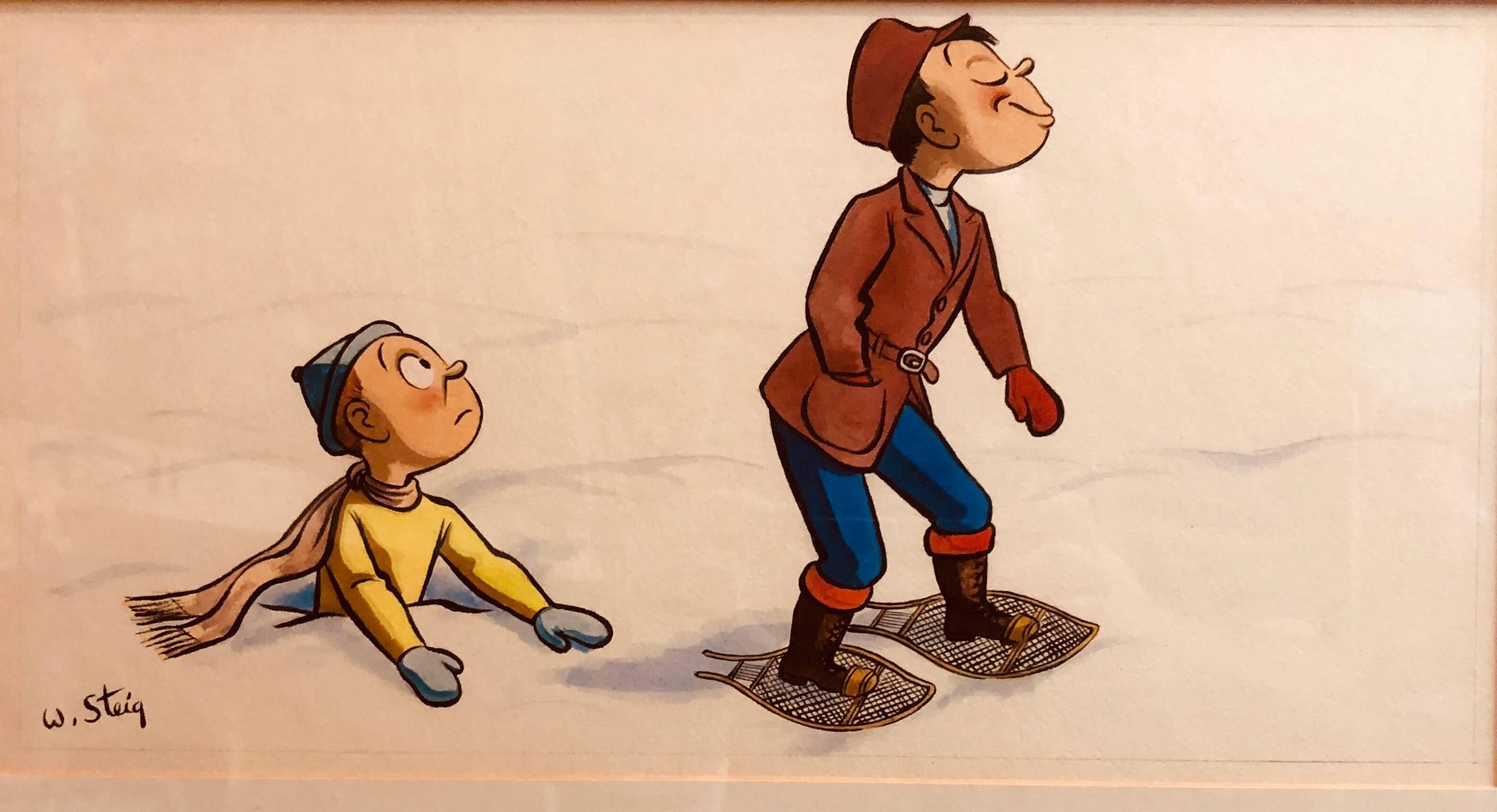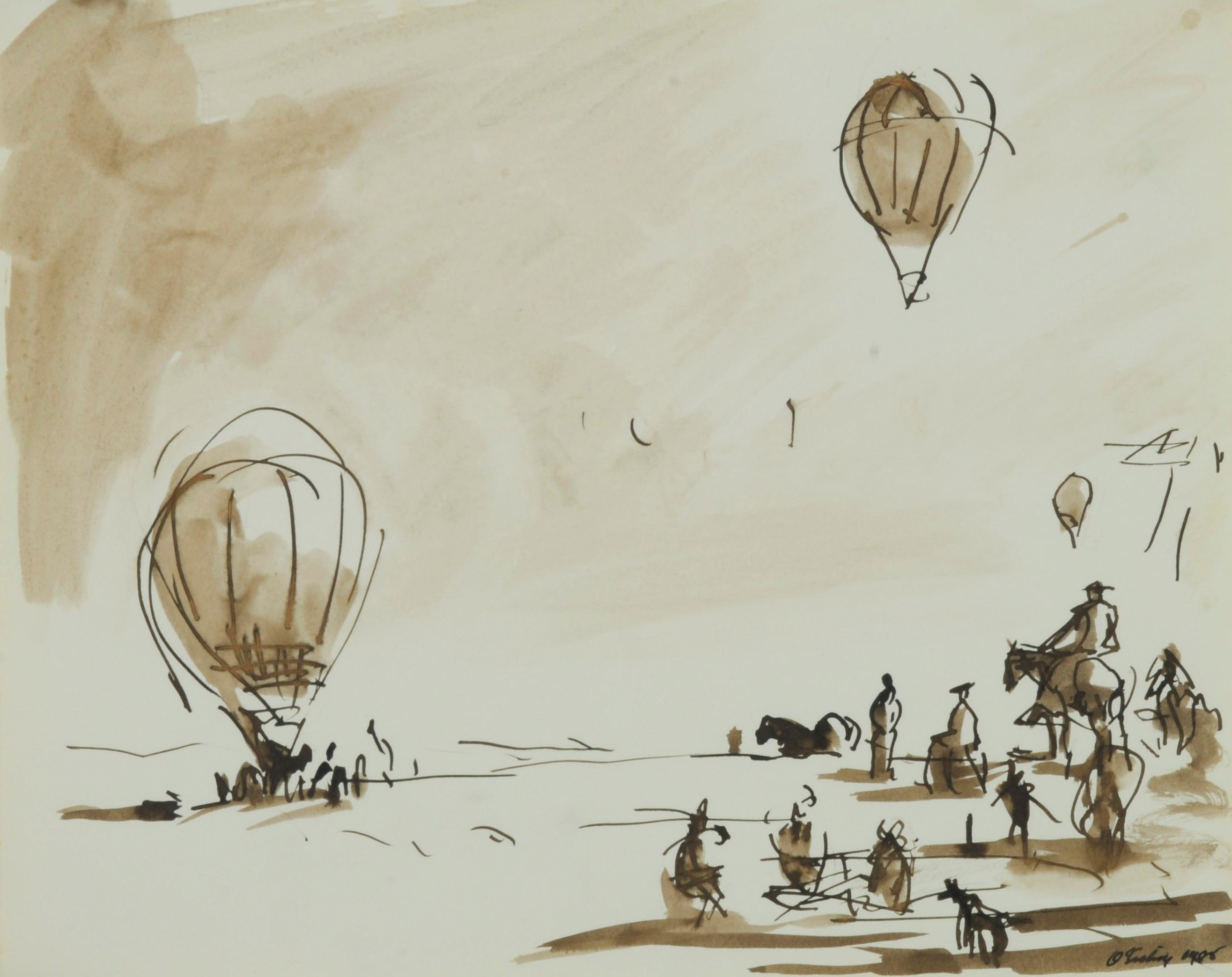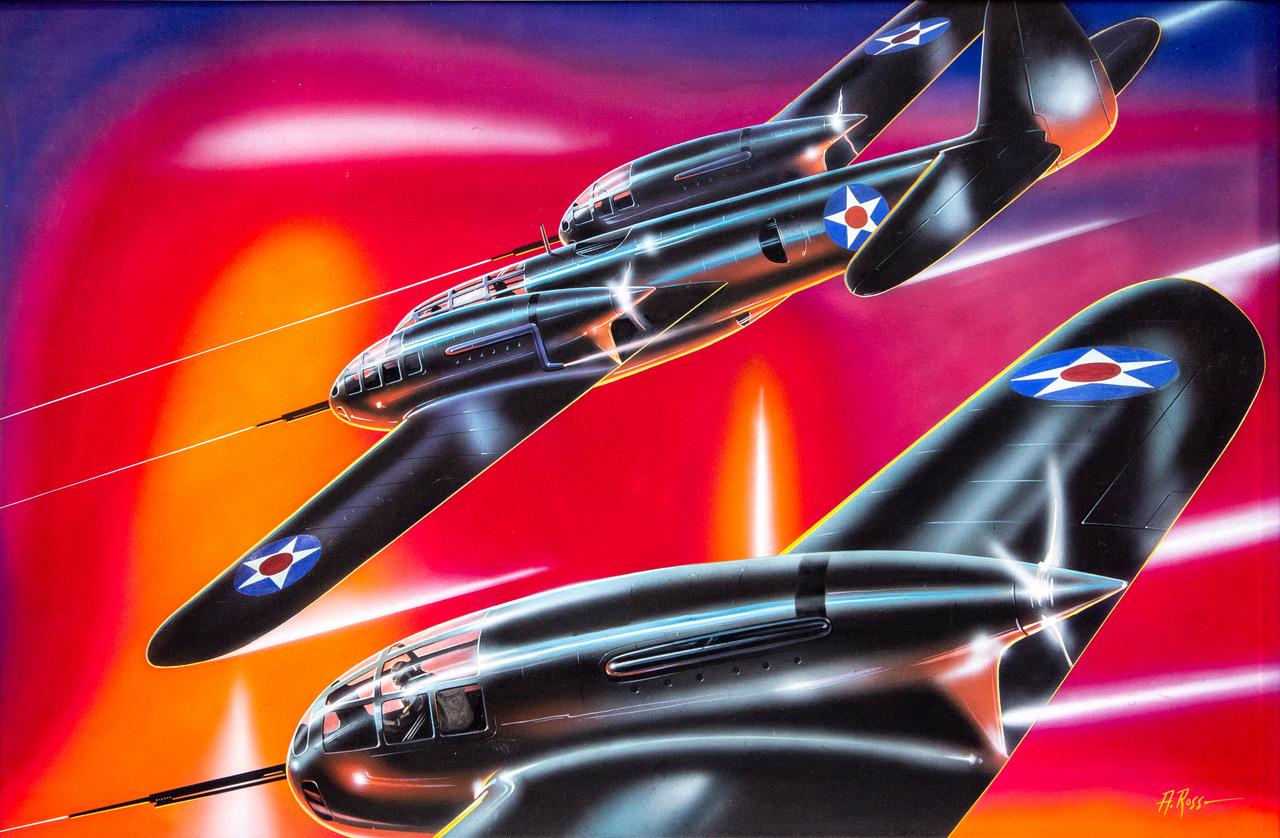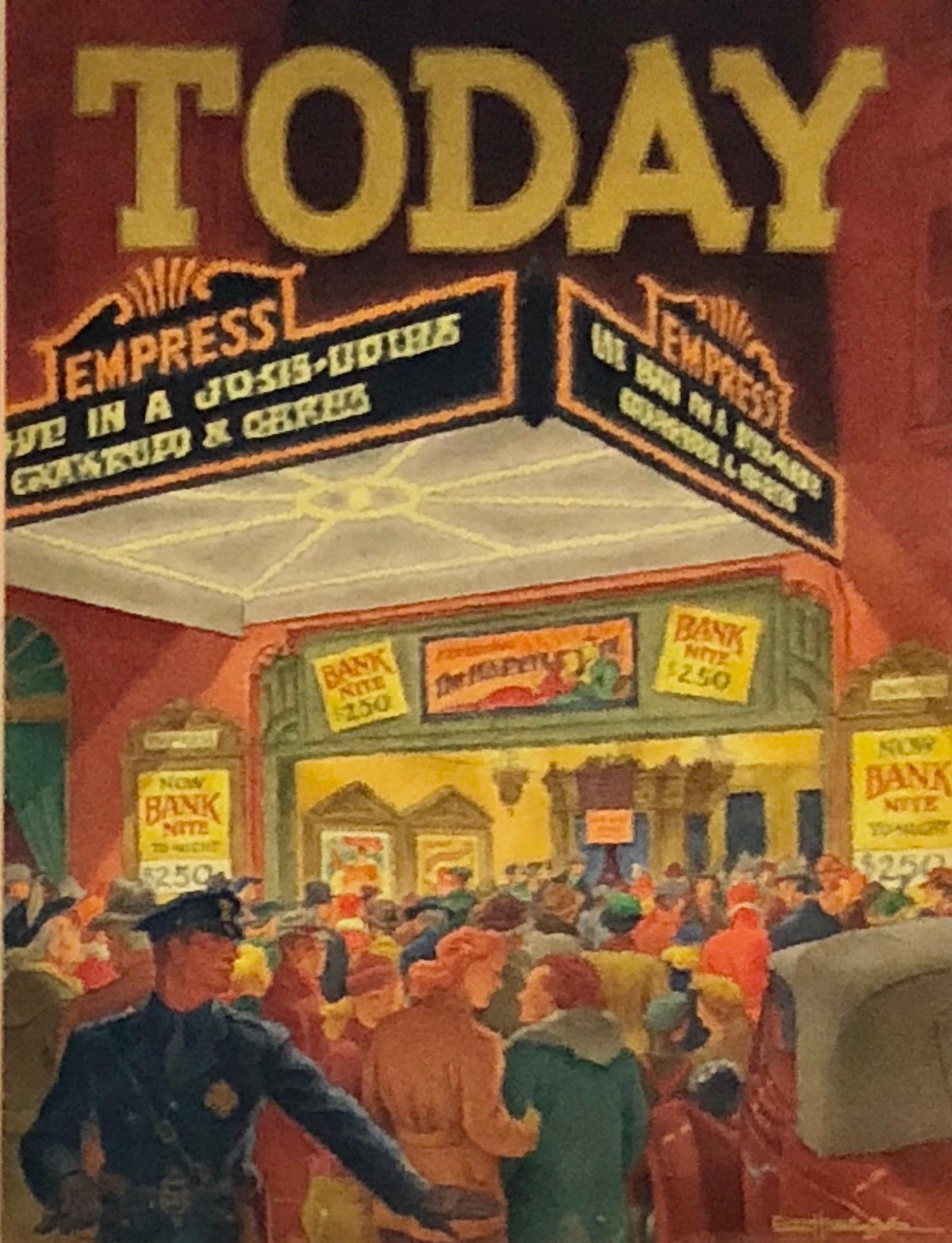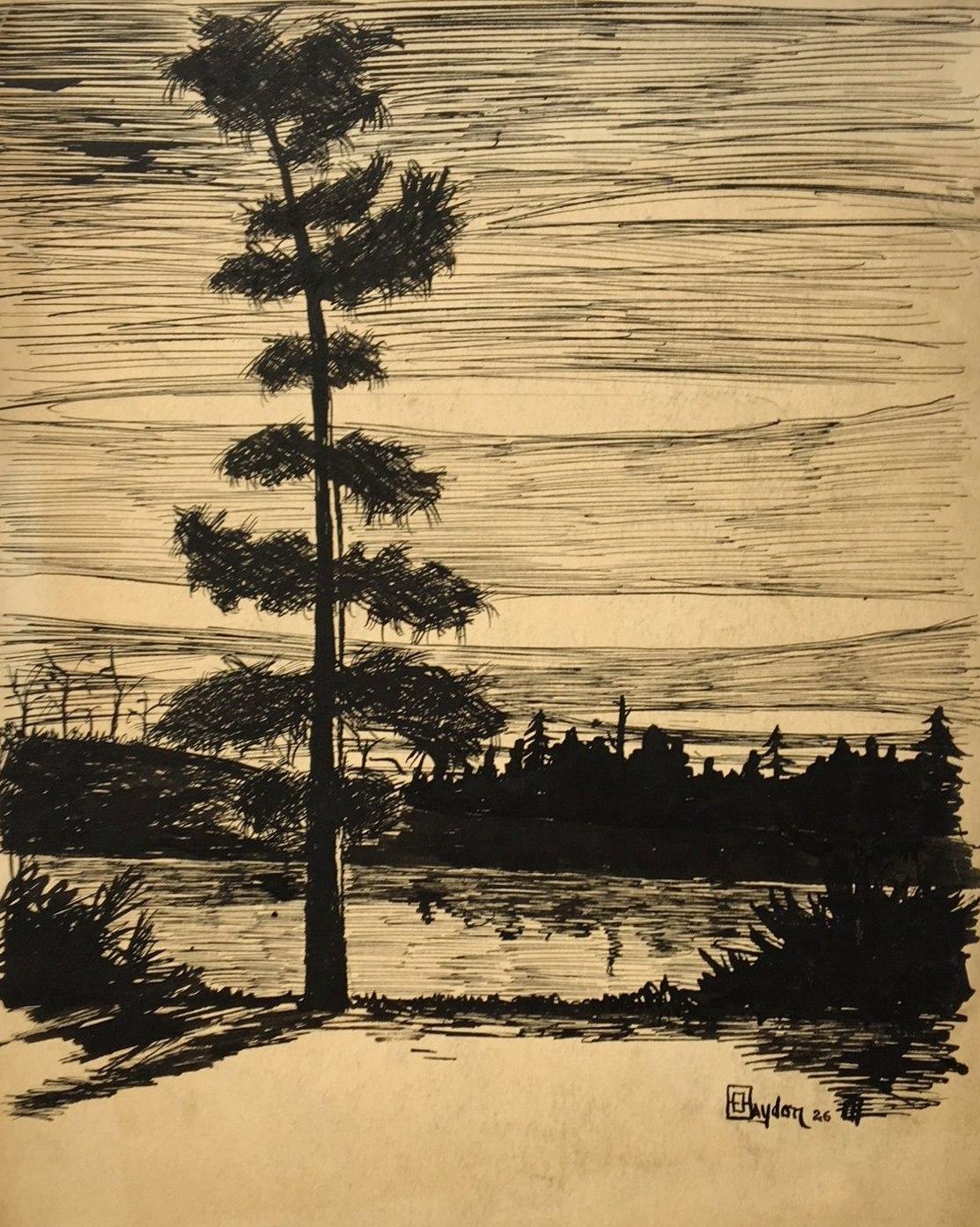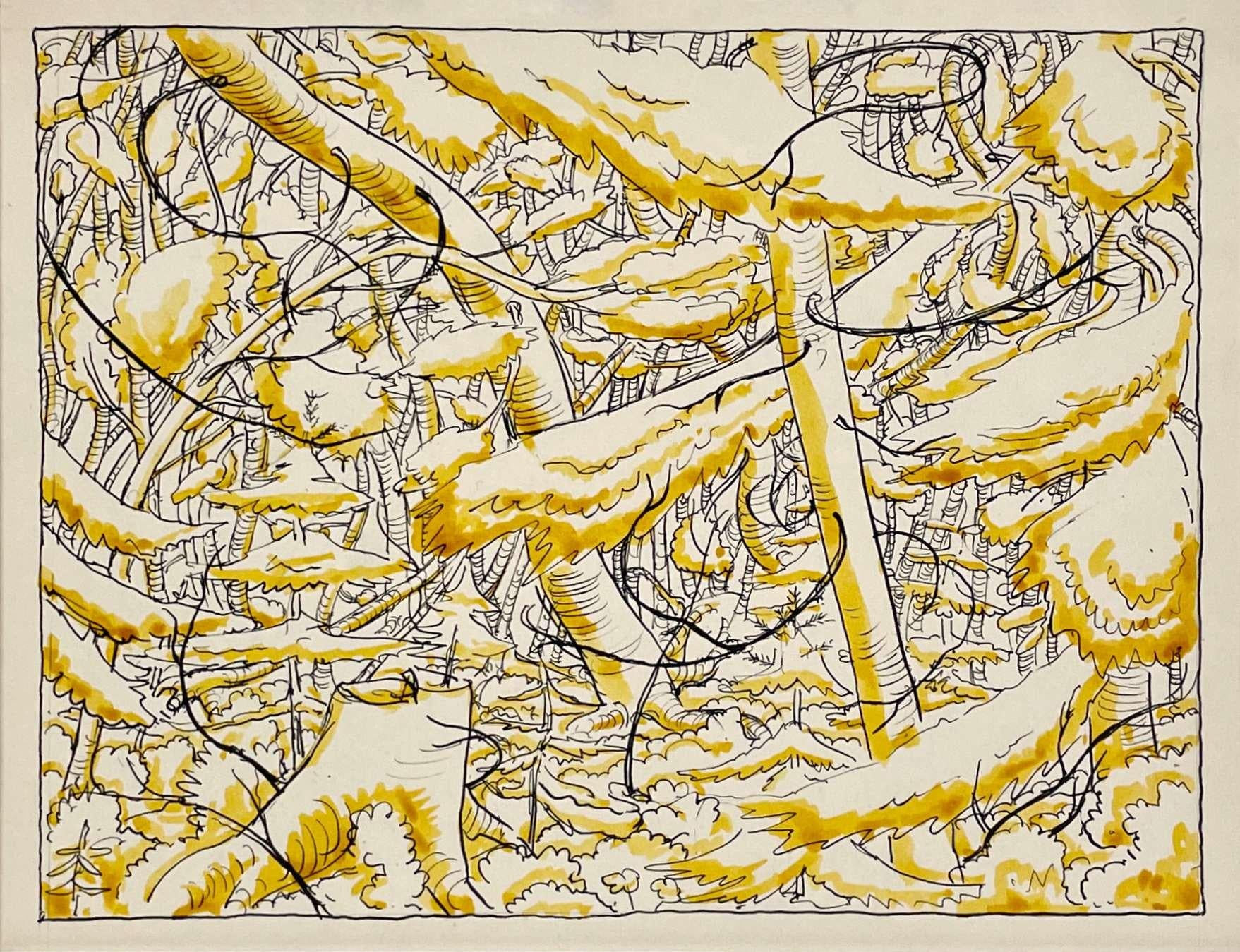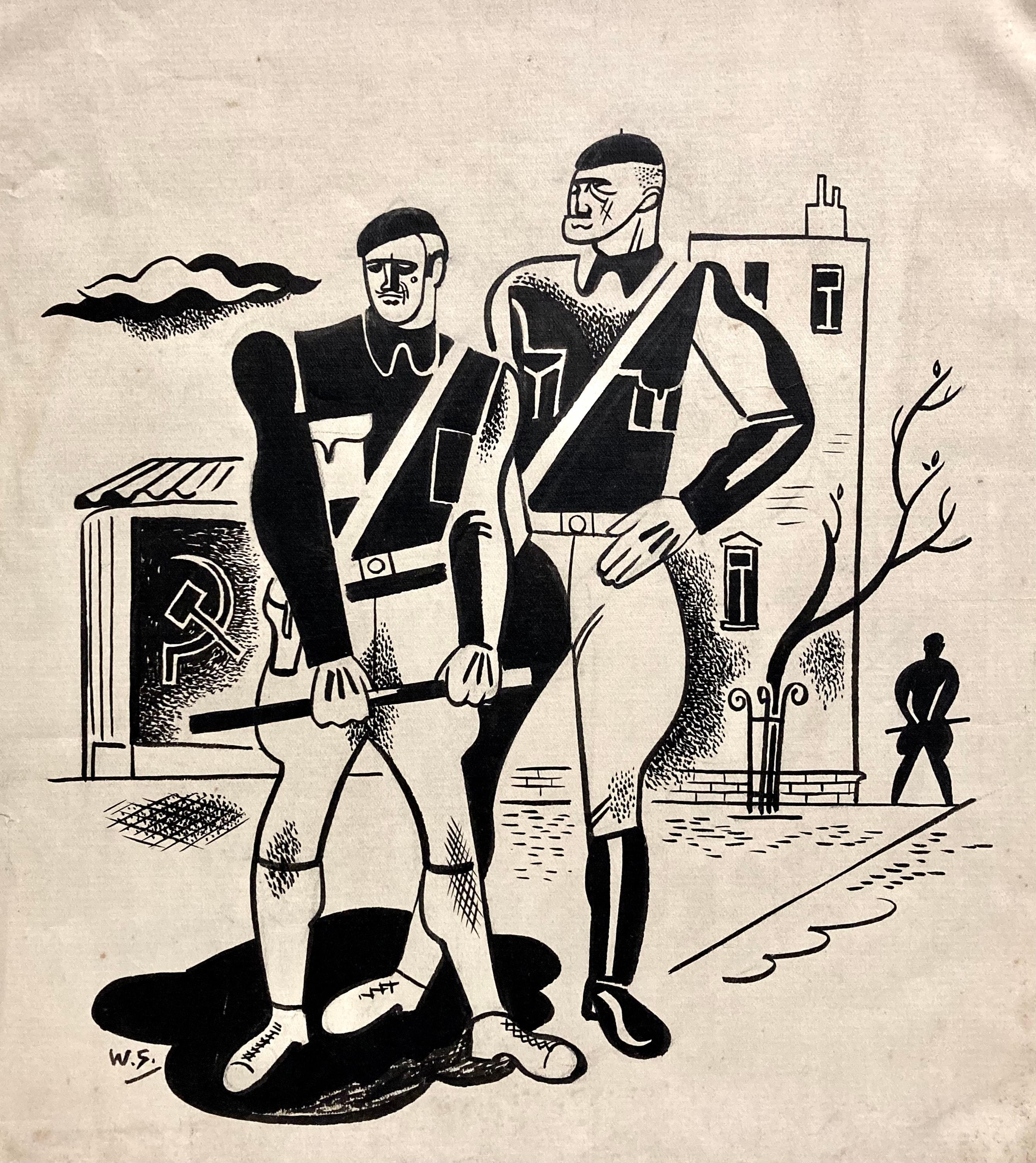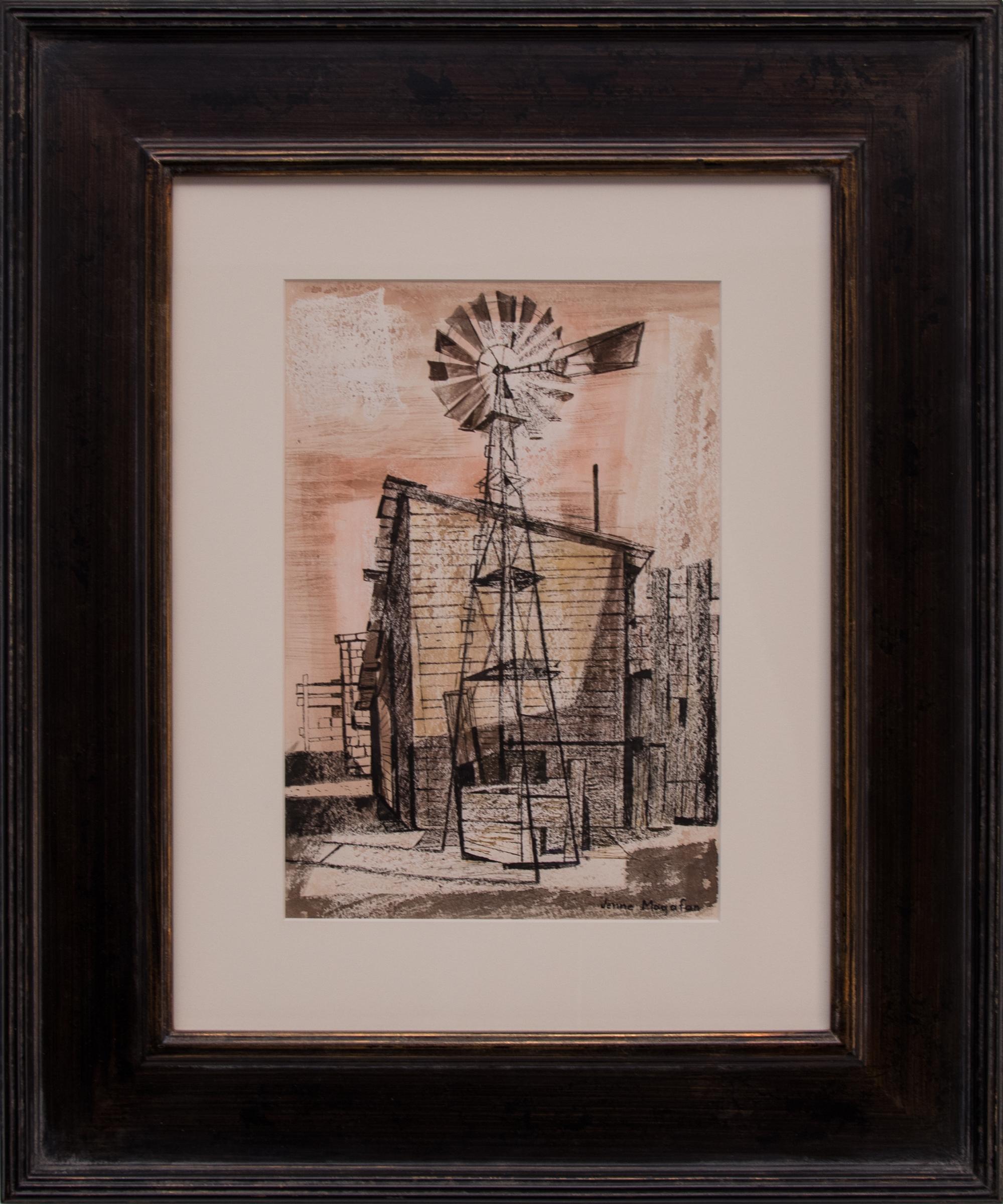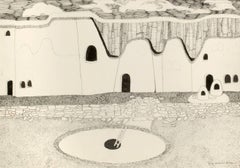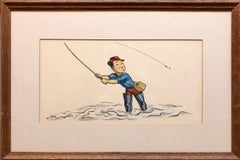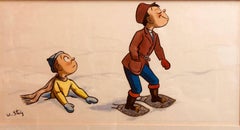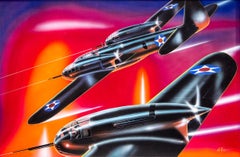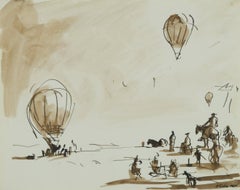
Untitled (Hot Air Baloon Ascent and Spectators)
View Similar Items
Want more images or videos?
Request additional images or videos from the seller
1 of 9
Joseph O'SickeyUntitled (Hot Air Baloon Ascent and Spectators)
About the Item
- Creator:Joseph O'Sickey (1918 - 2013, American)
- Dimensions:Height: 13.625 in (34.61 cm)Width: 17 in (43.18 cm)
- Medium:
- Movement & Style:
- Period:
- Condition:
- Gallery Location:Fairlawn, OH
- Reference Number:Seller: FA119041stDibs: LU1407305082
Joseph O'Sickey
Joseph O'Sickey, born in Detroit in 1918, has been a painter and teacher throughout his career. As a child he attended Saturday classes at the Cleveland Museum of Art, which retains one of his paintings in its permanent collection, and the Cleveland Institute of Art, where he received a Bachelor's degree in 1940. He graduated from the Cleveland School of Art (now the Cleveland Institute of Art) in 1940 and taught at Ohio State University (1946-47), Akron Art Institute (1949-52), Western Reserve University School of Architecture (1956-64), and Kent State University (1964-89). Among the most honored painters active in the region, O'Sickey won the Cleveland Arts Prize in Visual Arts in 1974, and was called "a dean of painting in Northeast Ohio" by Steven Litt, art and architecture critic of the Plain Dealer. However, his work continued to develop through his 20s, strongly influenced by post-impressionism. O'Sickey was represented in New York by Jacques Seligmann Galleries during the 1960s and 1970s (which presented seven one-person shows of his work) and by Kennedy Galleries in the 1980s and 1990s. In Ohio, notable exhibitions include a Distinguished Alumnus one-person show at the Cleveland Institute of Art (1982); a one-person show at the Canton Museum of Art (1995); exhibition in 24 May Shows at the Cleveland Museum of Art between 1938 and 1977. O'Sickey's work is also in the collections of the Cleveland Museum of Art, Ohio; Canton Museum of Art, Ohio; Westmoreland Museum of American Art, Greensburg, Pennsylvania; Butler Institute of American Art, Youngstown, Ohio; and Columbus Museum, Columbus, Georgia.
About the Seller
5.0
Recognized Seller
These prestigious sellers are industry leaders and represent the highest echelon for item quality and design.
Platinum Seller
These expertly vetted sellers are 1stDibs' most experienced sellers and are rated highest by our customers.
Established in 1978
1stDibs seller since 2013
713 sales on 1stDibs
Typical response time: 1 hour
Associations
International Fine Print Dealers Association
More From This SellerView All
- Untitled (Hot Air Baloon Ascent and Spectators)By Joseph O'SickeyLocated in Fairlawn, OHUntitled (Hot Air Balloon Ascent and Spectators) Sepia wash on wove paper, 1985 Signed and dated in ink lower right corner From the artist's 1985 sketchbook Probably a view of Cape C...Category
1980s American Modern Landscape Drawings and Watercolors
MaterialsInk
- untitled (Pueblo)By Virginia DehnLocated in Fairlawn, OHUntitled (Taos Pueblo) Ink on paper, 1985-1990 Signed by the artist in ink lower right (see photo) An early New Mexico period work, created shortly after the artist moved from New York. Provenance: estate of the artist Dehn Heirs Condition: Excellent Image/sheet size: 13 1/8 x 18 1/2 inches Virginia Dehn From Wikipedia, the free encyclopedia Virginia Dehn Virginia Dehn in her studio in Santa Fe Virginia Dehn (née Engleman) (October 26, 1922 – July 28, 2005) was an American painter and printmaker. Her work was known for its interpretation of natural themes in almost abstract forms. She exhibited in shows and galleries throughout the U.S. Her paintings are included in many public collections. Life Dehn was born in Nevada, Missouri on October 26, 1922.] Raised in Hamden, Connecticut, she studied at Stephens College in Columbia, Missouri before moving to New York City. She met the artist Adolf Dehn while working at the Art Students League. They married in November 1947. The two artists worked side by side for many years, part of a group of artists who influenced the history of 20th century American art. Their Chelsea brownstone was a place where artists, writers, and intellectuals often gathered. Early career Virginia Dehn studied art at Stephens College in Missouri before continuing her art education at the Traphagen School of Design, and, later, the Art Students League, both located in New York City. In the mid-1940s while working at the Associated American Artists gallery, she met lithographer and watercolorist Adolf Dehn. Adolf was older than Virginia, and he already enjoyed a successful career as an artist. The two were married in 1947 in a private ceremony at Virginia's parents house in Wallingford, Connecticut. Virginia and Adolf Dehn The Dehns lived in a Chelsea brownstone on West 21st Street where they worked side by side. They often hosted gatherings of other influential artists and intellectuals of the 20th century. Among their closest friends were sculptor Federico Castellón and his wife Hilda; writer Sidney Alexander and his wife Frances; artists Sally and Milton Avery; Ferol and Bill Smith, also an artist; and Lily and Georges Schreiber, an artist and writer. Bob Steed and his wife Gittel, an anthropologist, were also good friends of the Dehns. According to friend Gretchen Marple Pracht, "Virginia was a glamorous and sophisticated hostess who welcomed visitors to their home and always invited a diverse crowd of guests..." Despite their active social life, the two were disciplined artists, working at their easels nearly daily and taking Saturdays to visit galleries and view new work. The Dehns made annual trips to France to work on lithographs at the Atelier Desjobert in Paris. Virginia used a bamboo pen to draw directly on the stone for her lithographs, which often depicted trees or still lifes. The Dehns' other travels included visits to Key West, Colorado, Mexico, and countries such as Greece, Haiti, Afghanistan, and India. Dehn's style of art differend greatly from that of her husband, though the two sometimes exhibited together. A friend of the couple remarked, "Adolf paints landscapes; Virginia paints inscapes." Virginia Dehn generally painted an interior vision based on her feelings for a subject, rather than a literal rendition of it.] Many of her paintings consist of several layers, with earlier layers showing through. She found inspiration in the Abstract Expressionism movement that dominated the New York and Paris art scenes in the 1950s. Some of her favorite artists included Adolf Gottileb, Rothko, William Baziotes, Pomodoro, and Antonio Tapies. Dehn most often worked with bold, vibrant colors in large formats. Her subjects were not literal, but intuitive. She learned new techniques of lithography from her husband Adolf, and did her own prints. Texture was very important to her in her work. Her art was influenced by a variety of sources. In the late 1960s she came across a book that included photographs of organic patterns of life as revealed under a microscope. These images inspired her to change the direction of some of her paintings. Other influences on Dehn's art came from ancient and traditional arts of various cultures throughout the world, including Persian miniatures, illuminated manuscripts, Dutch still life painting, Asian art, ancient Egyptian artifacts...Category
Early 20th Century American Modern Landscape Drawings and Watercolors
MaterialsInk
- untitled (Pueblo)By Virginia DehnLocated in Fairlawn, OHUntitled (Taos Pueblo) Ink on paper, 1985-1990 Signed by the artist in ink lower right (see photo) An early New Mexico period work, created shortly af...Category
Early 20th Century American Modern Landscape Drawings and Watercolors
MaterialsInk
- The Duomo, FlorenceBy Donald Shaw MacLaughlanLocated in Fairlawn, OHThe Duomo, Florence Watercolor, 1914 Signed and dated lower center edge (see photo) Florence Cathedral, formally the Cattedrale di Santa Maria del Fiore, is the cathedral of Florence, Italy. It was begun in 1296 in the Gothic style to a design of Arnolfo di Cambio and was structurally completed by 1436, with the dome engineered by Filippo Brunelleschi. Condition: Excellent Image size: 16 3/4 x 14 1/2 inches Frame size: 24 1/4 x 22 inches Donald Shaw MacLaughlan was born in Charlottetown, Prince Edward Island, Canada on November 9, 1876. His family moved to Boston, Massachusetts in 1890 where he began to experiment with different art media; watercolor, oil painting and finally, etching – with a few attempts at lithography. He spent much of his early years at the Boston Public Library studying the work of printmakers, from Durer and Rembrandt to the 18th century English, French and Italian masters. Like many American artists of the time MacLaughlan traveled to Europe to study in Paris, enrolling in the Ecole des Beaux Arts and studied further with Jean Leon Gerome and Jean Paul Laurens. In 1899 he began producing etchings, which became his major interest until his death in 1938. He became acquainted with James NcNeill Whistler (1834-1903) and other artists who created etchings and spent time studying the etchings of Rembrandt van Rijn (1606-1669) and other old masters in the collection of the Bibliothèque Nationale. Both Rembrandt and Whistler would have major influences on his art. In 1900 he created a set of 25 etched views of Paris and in 1901 exhibited two etchings in the Salon de la Société Nationale des Beaux-Arts. He returned to the U.S. in 1903, then went back to Paris the following year. He traveled extensively in Europe, visiting England, Switzerland, Italy and Spain as well as various locales in France. His etched views of Venice were well-known. MacLaughlan exhibited views of Paris, Rouen, Normandy and Italy in 1906 in a solo show at the American Art Association Galleries in Paris. He also displayed his work in the 1906 exhibitions of the Société Nationale des Beaux-Arts and the Société des Peintres-Graveurs Français. MacLaughlan even instructed other expatriate Canadian artists then living in Paris, most notably Clarence...Category
1910s American Modern Landscape Drawings and Watercolors
MaterialsWatercolor
- untitled (Rocks along the Coast)By William C. GrauerLocated in Fairlawn, OHuntitled (Rocks along the Coast) Gouache and watercolor on paper, c. 1950 Signed with the estate stamp signature lower left (see photo) This is a preliminary study for a large exhibition painting...Category
1950s American Modern Drawings and Watercolor Paintings
MaterialsGouache
- Untitled (West Virginia fam valley and blue hills)By William C. GrauerLocated in Fairlawn, OHAfter creating murals for the Greenbrier Hotel in White Sulfur Springs, West Virginia in 1932, together Grauer and his wife founded and co-directed the successful Old White Art Colony, School and Gallery, which they continued to frequent during the summer months in the 1930s and 1940s. Grauer’s involvement in West Virginia also included his West Virginia murals for the West Virginia exhibitions at the 1933 Century of Progress Exhibition in Chicago and the 1939 World’s Fair in New York City. William C. Grauer (1895-1985) William C. Grauer (1895-1985) was born in Philadelphia to German immigrant parents. After attending the Philadelphia Museum School of Industrial Art, Grauer received a four year scholarship from the City of Philadelphia to pursue post graduate work. It was during this time that Grauer began working as a designer at the Decorative Stained Glass Co. in Philadelphia. Following his World War I service in France, Grauer moved to Akron, Ohio where he opened a studio in 1919 with his future brother-in-law, the architect George Evans Mitchell. Soon, the Rorimer-Brooks design company, the developer Van Swerngen brothers, as well as the Sterling Welch and Halle Bros. department stores realized the extent of Grauer's talent and eagerly employed him. Grauer’s work during this time included architectural renderings for Shaker Square, Moreland Courts, and other many other projects commissioned by Cleveland architects. Grauer also remained true to his roots as a master designer of stained glass windows. With his work in such high demand, Grauer received a commission in 1921 to paint murals for the French Grill Room of the Kansas City Club...Category
1930s American Modern Landscape Drawings and Watercolors
MaterialsWatercolor
You May Also Like
- Whimsical Fishing Illustration Cartoon 1938 Mt Tremblant Ski Lodge William SteigBy William Steig (b.1907)Located in Surfside, FLLighthearted Illustration of Outdoor Pursuits This one of a fisherman signed "W. Steig" Provenance: from Mrs. Joseph B. Ryan, Commissioned by Joe Ryan for the bar at his ski resort, Mount Tremblant Lodge, in 1938. Mont Tremblant, P.Q., Canada Watercolor and ink on illustration board, sights sizes 8 1/2 x 16 1/2 in., framed. In 1938 Joe Ryan, described as a millionaire from Philadelphia, bushwhacked his way to the summit of Mont Tremblant and was inspired to create a world class ski resort at the site. In 1939 he opened the Mont Tremblant Lodge, which remains part of the Pedestrian Village today. This original illustration is on Whatman Illustration board. the board measures 14 X 22 inches. label from McClees Galleries, Philadelphia, on the frame backing paper. William Steig, 1907 – 2003 was an American cartoonist, sculptor, and, in his later life, an illustrator and writer of children's books. Best known for the picture books Sylvester and the Magic Pebble, Abel's Island, and Doctor De Soto, he was also the creator of Shrek!, which inspired the film series of the same name. He was the U.S. nominee for both of the biennial, international Hans Christian Andersen Awards, as a children's book illustrator in 1982 and a writer in 1988. Steig was born in Brooklyn, New York in 1907, and grew up in the Bronx. His parents were Polish-Jewish immigrants from Austria, both socialists. His father, Joseph Steig, was a house painter, and his mother, Laura Ebel Steig, was a seamstress who encouraged his artistic leanings. As a child, he dabbled in painting and was an avid reader of literature. Among other works, he was said to have been especially fascinated by Pinocchio.He graduated from Townsend Harris High School at 15 but never completed college, though he attended three, spending two years at City College of New York, three years at the National Academy of Design and a mere five days at the Yale School of Fine Arts before dropping out of each. Hailed as the "King of Cartoons" Steig began drawing illustrations and cartoons for The New Yorker in 1930, producing more than 2,600 drawings and 117 covers for the magazine. Steig, later, when he was 61, began writing children's books. In 1968, he wrote his first children's book. He excelled here as well, and his third book, Sylvester and the Magic Pebble (1969), won the Caldecott Medal. He went on to write more than 30 children's books, including the Doctor DeSoto series, and he continued to write into his nineties. Among his other well-known works, the picture book Shrek! (1990) formed the basis for the DreamWorks Animation film Shrek (2001). After the release of Shrek 2 in 2004, Steig became the first sole-creator of an animated movie franchise that went on to generate over $1 billion from theatrical and ancillary markets after only one sequel. Along with Maurice Sendak, Saul Steinberg, Ludwig Bemelmans and Laurent de Brunhofff his is one of those rare cartoonist whose works form part of our collective cultural heritage. In 1984, Steig's film adaptation of Doctor DeSoto directed by Michael Sporn was nominated for the Academy Award for Best Animated Short Film. As one of the most admired cartoonists of all time, Steig spent seven decades drawing for the New Yorker magazine. He touched generations of readers with his tongue–in–cheek pen–and–ink drawings, which often expressed states of mind like shame, embarrassment or anger. Later in life, Steig turned to children's books, working as both a writer and illustrator. Steig's children's books were also wildly popular because of the crazy, complicated language he used—words like lunatic, palsied, sequestration, and cleave. Kids love the sound of those words even if they do not quite understand the meaning. Steig's descriptions were also clever. He once described a beached whale as "breaded with sand." Throughout the course of his career, Steig compiled his cartoons and drawings into books. Some of them were published first in the New Yorker. Others were deemed too dark to be printed there. Most of these collections centered on the cold, dark psychoanalytical truth about relationships. They featured husbands and wives fighting and parents snapping at their kids. His first adult book, Man About Town, was published in 1932, followed by About People, published in 1939, which focused on social outsiders. Sick of Each Other, published in 2000, included a drawing depicting a wife holding her husband at gunpoint, saying, "Say you adore me." According to the Los Angeles Times, fellow New Yorker artist...Category
1930s American Modern Figurative Drawings and Watercolors
MaterialsIndia Ink, Watercolor, Illustration Board
- Whimsical Illustration "Snow" Cartoon, 1938 Mt Tremblant Ski Lodge William SteigBy William Steig (b.1907)Located in Surfside, FLLighthearted Illustration of Outdoor Pursuits This one being cross country Snow Shoes signed "W. Steig" Provenance: from Mrs. Joseph B. Ryan, Commissioned by ...Category
1930s American Modern Figurative Drawings and Watercolors
MaterialsIndia Ink, Watercolor, Illustration Board
- Airacuda Fighter Planes Art Deco Machine Age 20th Century American ModernismLocated in New York, NYAiracuda Fighter Planes Art Deco Machine Age 20th Century American Modernism Arthur Rosenman Ross (1913 - 1981) Bell YFM-1 Airacuda Fighter Planes 17 1/2 x 26 1/2 inches Gouache, Airbrush and Ink on Illustration Board, 1938 Signed A. Ross lower right Provenance: Estate of the artist. BIO Arthur Rosenman Ross was a key figure in automotive design at General Motors during America's "Golden Age" of auto design, the 1930's through the 1950s. He attended the Art Institute of Chicago from age 17, exhibiting a special interest for automotive renderings and the female figure. In 1934, he changed his name from Rosenman to Ross, fearing his Jewish ancestry could prejudice his career prospects. At age 20, he turned down job offers from MGM Studios in Hollywood and Duesenberg to work at General Motors alongside the Legendary Harley Earl in 1935. He was hand picked by Mr. Earl and assigned to GM's War and Camouflage Division in 1937 through WW2. It was during this pivotal period in which he executed some extraordinary military aircraft artworks, likely used between GM and America's military aeronautics companies in design preparation for WW2. General Motors played an important role in helping America's aircraft manufacturers preceding and during the war. Just after the war in 1945, Mr. Ross was rewarded by GM, being made Chief Designer of Cadillac, then two years later becoming Chief at Oldsmobile until his retirement in 1959. He was in large part responsible for some of GM's classic Cadillac designs such as the Cadillac Sixty Special, Fleetwood, LaSalle and GM's first concept car, the extraordinary Buick Y-Job. Mr. Ross was an exceptionally charismatic and vivacious man who quite by chance, befriended His idol, Salvador Dali at GM in 1955. They talked about art, cars and girls late into the evening, according to his son, Carter Ross. He had a gift in rendering the erotic arts...Category
1930s American Modern Landscape Drawings and Watercolors
MaterialsInk, Gouache, Board
- Magazine Cover Illustration Mid 20th Century Modern Theatre Broadway Realism WPABy Ernest Hamlin BakerLocated in New York, NYMagazine Cover Illustration Mid 20th Century Modern Theatre Broadway Realism WPA Ernest Hamlin Baker (1889 – 1975) “Today Magazine” Cover ...Category
1930s American Modern Figurative Drawings and Watercolors
MaterialsGouache, Paper, Watercolor, Ink
- Ink on Paper Drawing of a Cedar Tree and a Northern Lake by Artist Harold HaydonBy Harold HaydonLocated in Chicago, ILA 1926 ink on paper drawing of a Cedar tree and northern lake by artist Harold Haydon. Harold Emerson Haydon was born in Fort William, Ontario, Canada in 1909. Haydon came to Ch...Category
1920s American Modern Landscape Drawings and Watercolors
MaterialsPaper, Ink
- Forest Scene, Study in Yellow by artist Harold HaydonBy Harold HaydonLocated in Chicago, ILA ca. 1931 charming watercolor forest scene; a study in yellow by artist Harold Haydon. Harold Emerson Haydon was born in Fort William, Ontario, Canad...Category
1930s American Modern Landscape Drawings and Watercolors
MaterialsInk, Pen, Watercolor, Paper

